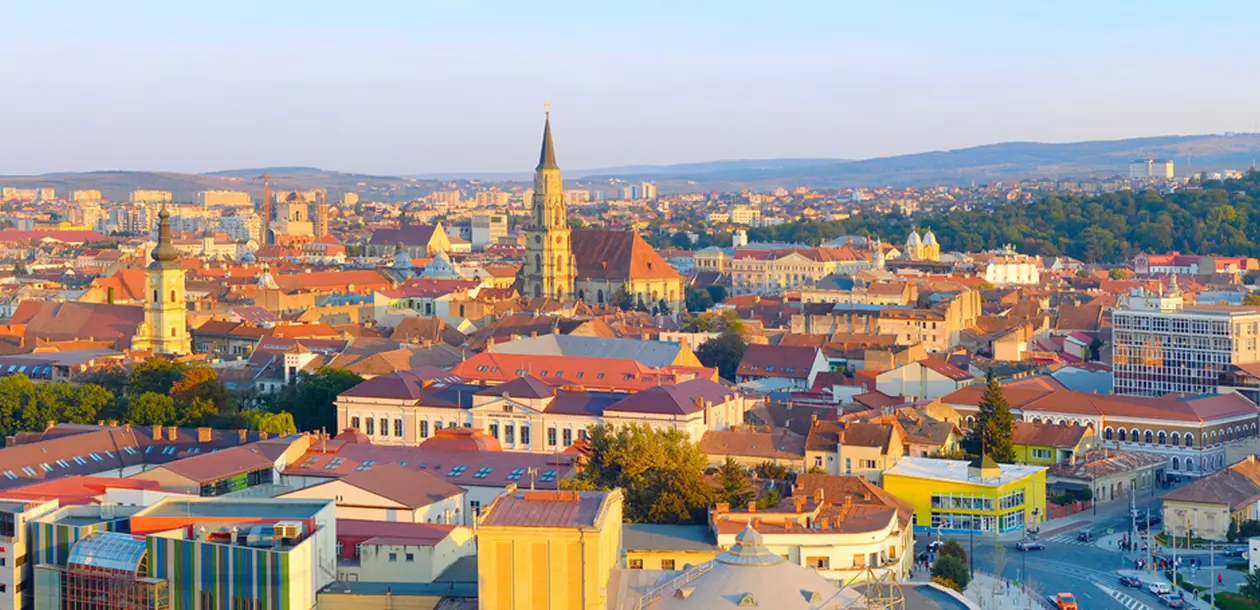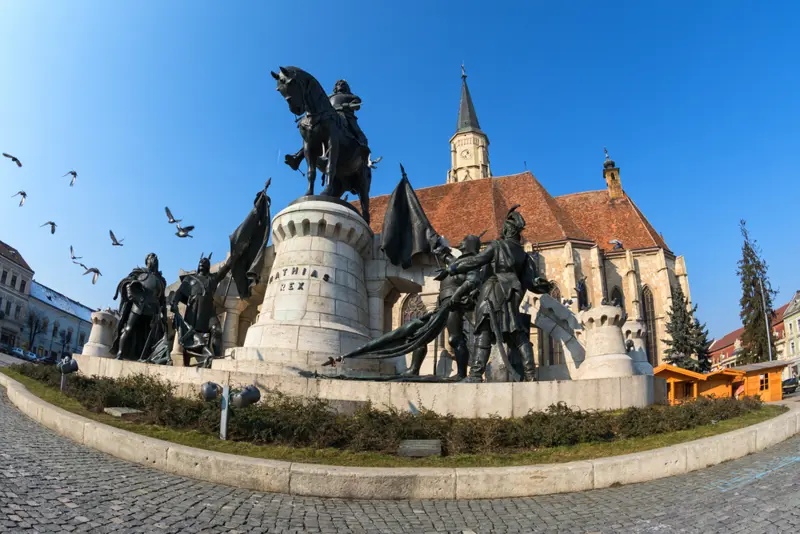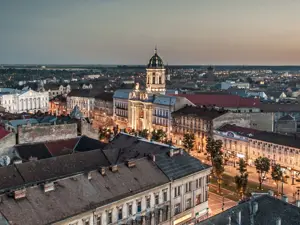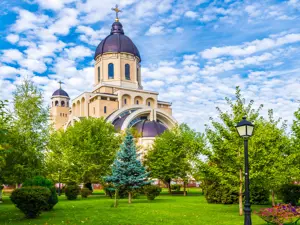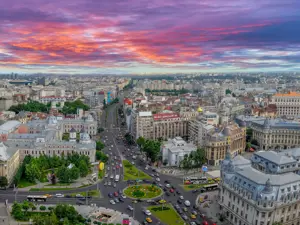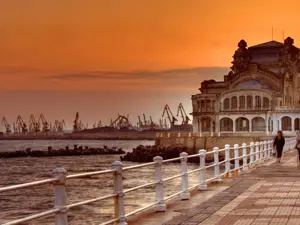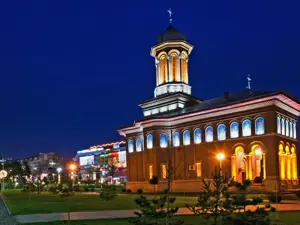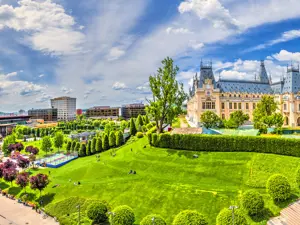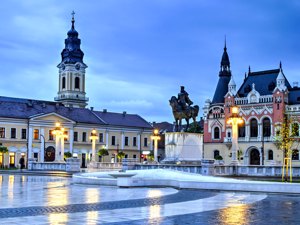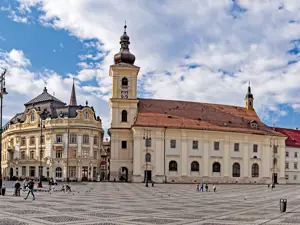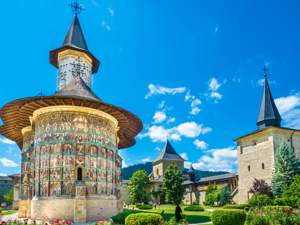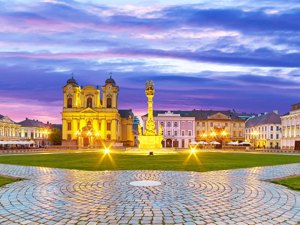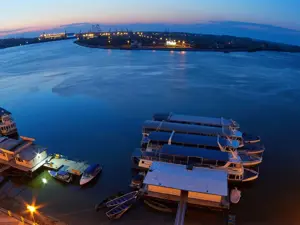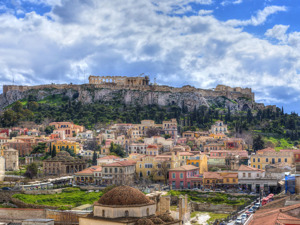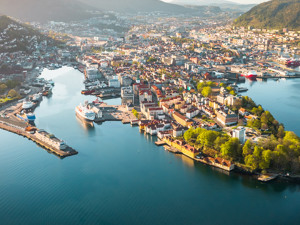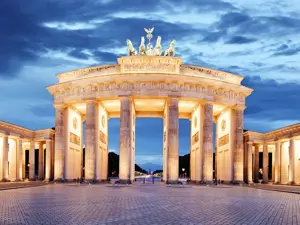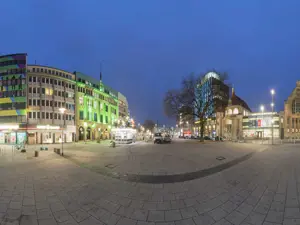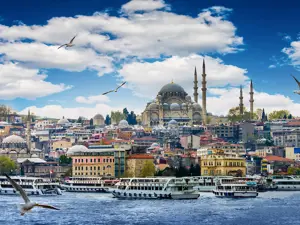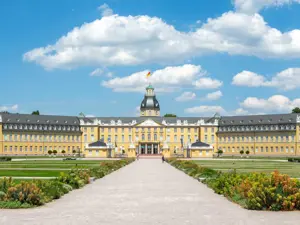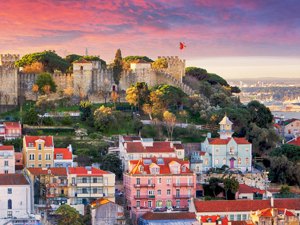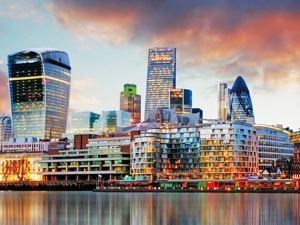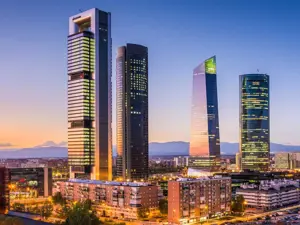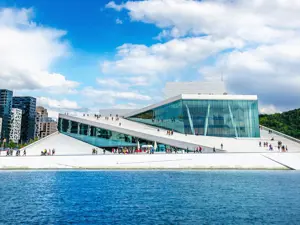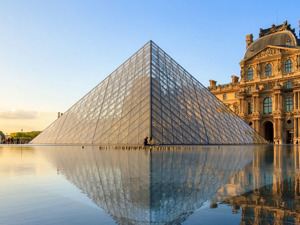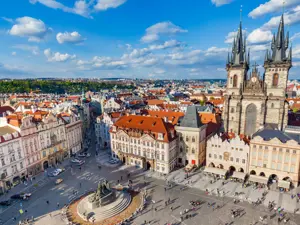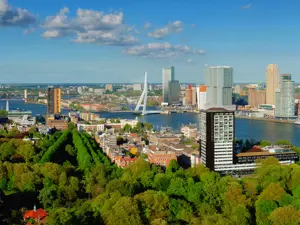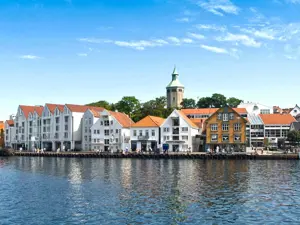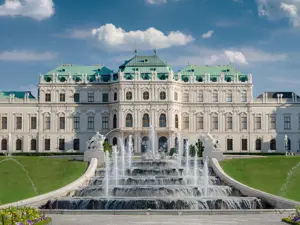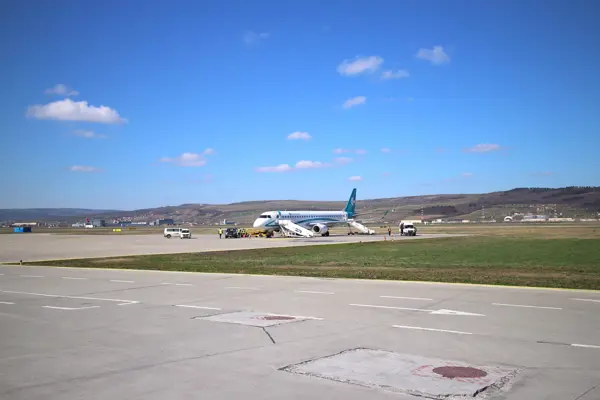A multiethnic city in Romania
The historic capital of Transylvania, almost 480 km north of Bucharest, Cluj is a cultural city par excellence and a prestigious university city with a long tradition dating back to the College of Piarists, a historical and educational institute founded in the eighteenth century.
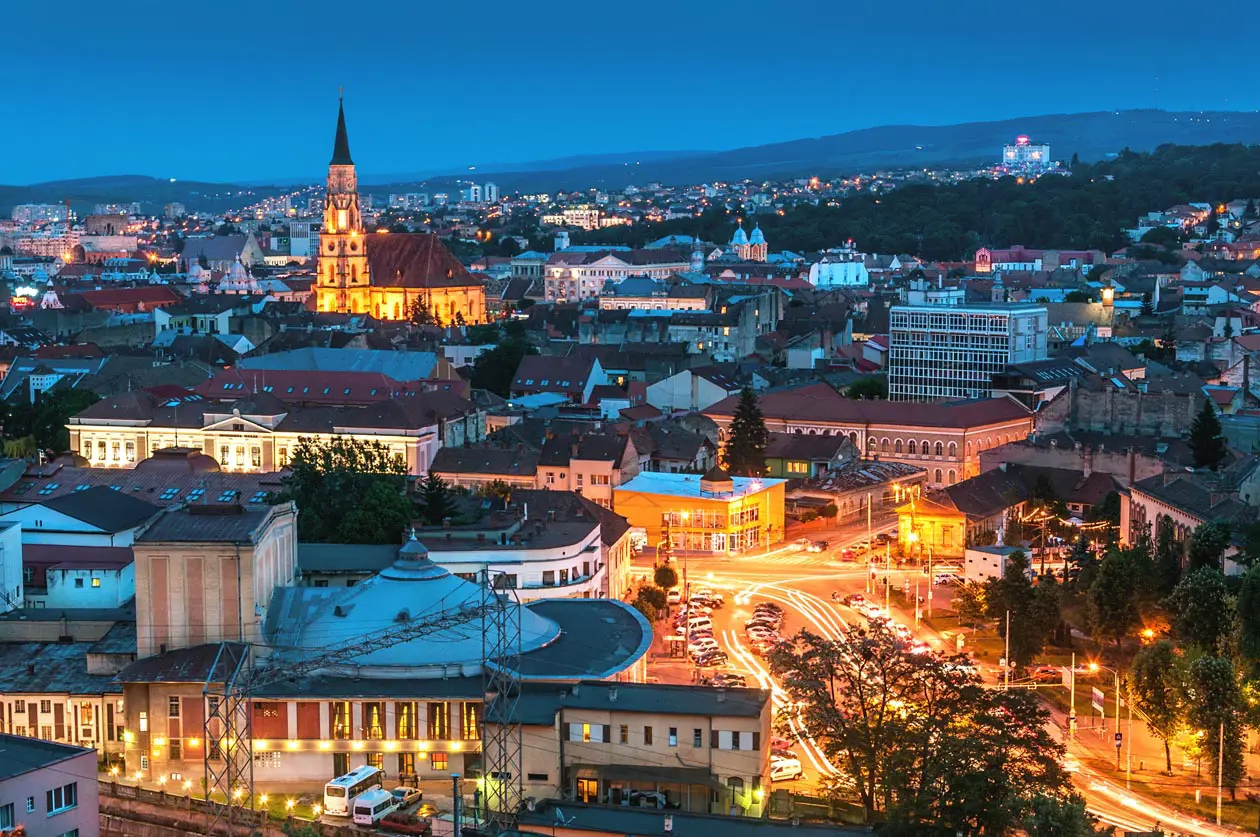
Cluj by night. Copyright © Sisterscom.com / Shutterstock
Cluj is a multiethnic city which, because of the many influences and dominations that occurred from the first century AD, is now home to Romanians, Hungarians and Germans who have inspired both the food and varied architecture. House styles range from Baroque to Empire and Classicism with Gothic elements.
Religious monuments in Cluj
There are many monumental attractions associated to religious faith. St. Michael’s Church, built in 1349, in Gothic style, is the main cathedral of Cluj and houses beautiful Renaissance treasures.
Then there are the Fortress Church, the Orthodox Cathedral, the Calvaria Manastur Church, the Piarist Church, the Franciscan Complex and the New Synagogue. The city also features many references to Matei Corvin, a native of Cluj and King of Hungary between 1458 and 1490.
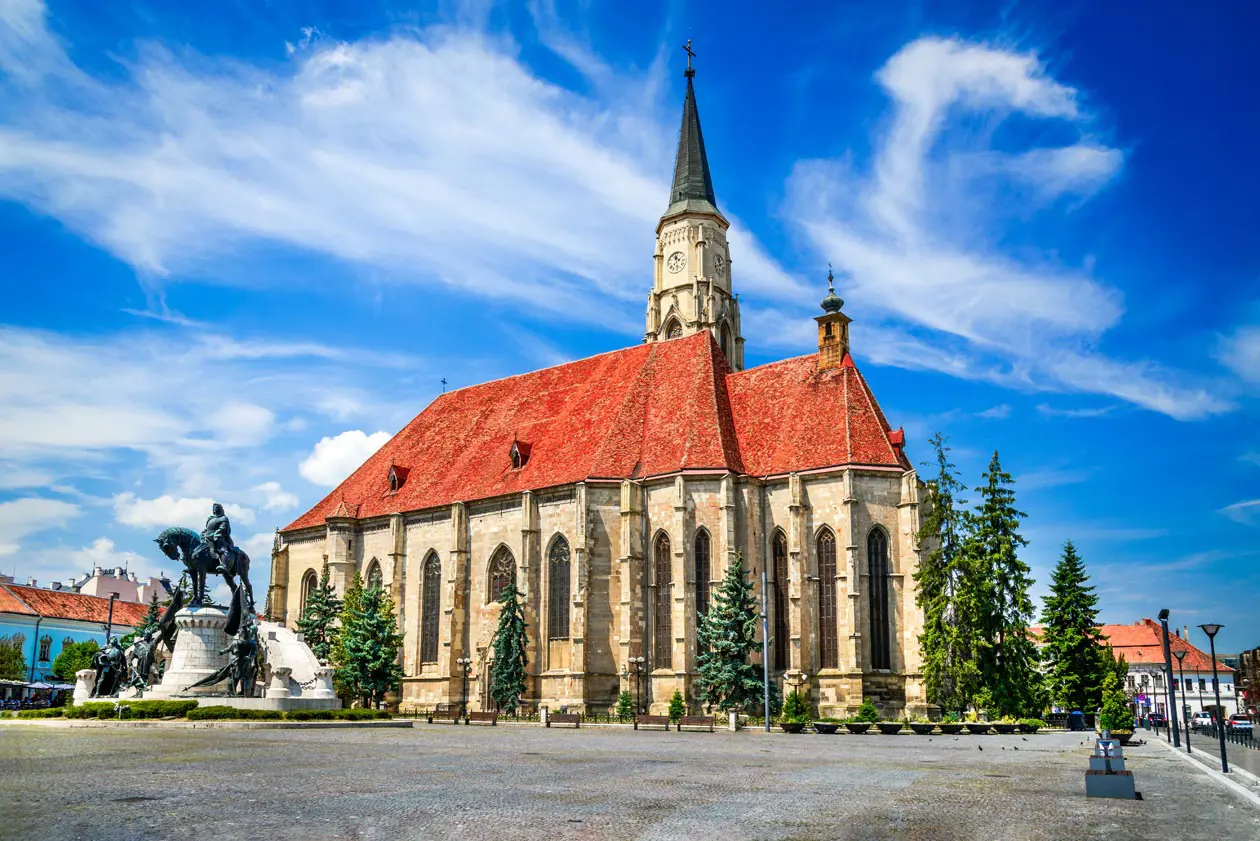
Church of St Michele. Copyright © Sisterscom.com / Shutterstock
Piata Libertatii (Liberty Square) is Cluj’s main square and surrounded by old buildings dating back to the seventeenth and eighteenth centuries. Nearby is Palatul Banffy (Banffy Palace), a late Baroque building built between 1773 and 1785 and home to the Art Museum, which houses an important collection of Romanian paintings dating back to the medieval times.
Museums in Cluj
The identity of Transylvania is revealed in two museums filled with treasures: the History Museum near Muzeului Square, which preserves documents and relics that illustrate the region’s history from prehistory to the present day with inscriptions, ceramics, glass and religious art; and the Ethnography Museum of Transylvania, housed in a Neoclassical building, which offers a detailed look at the life, costumes and traditions (agriculture, farming, textile processing) and the ethnic groups who have contributed to forming the character of the city over the centuries.
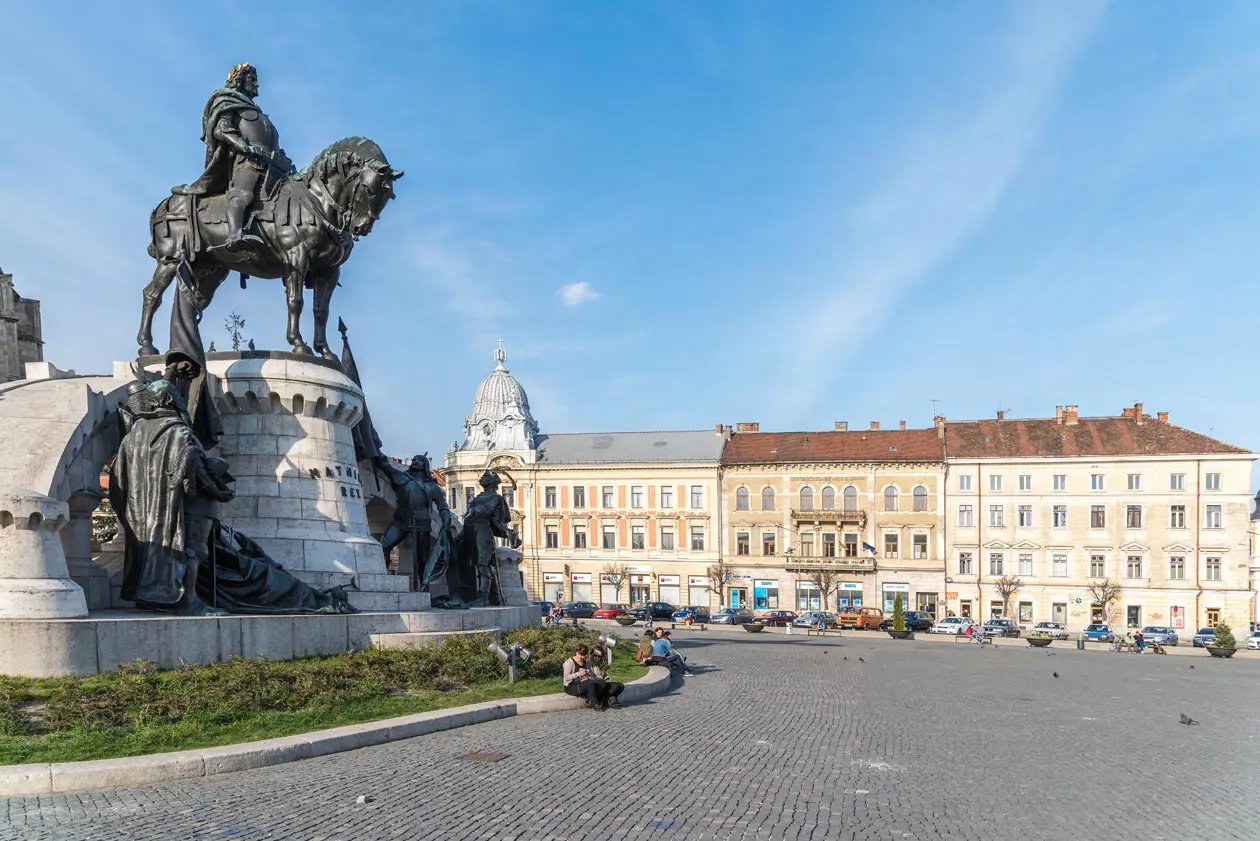
Situated on a hill near the Forest of Hoia, the open-air section of the ethnography museum is one of the great attractions of the city. Since 1929 it has been a genuine Transylvanian village with rural and craft products and tools, and features three churches built only of wood. The Botanical Garden lies in the hills around the historic centre and is home to more than ten thousand European and tropical plant species.
Cluj is also an important industrial area of Romania, which is associated in particular with the brand Ursus, the most famous Romanian beer, and Farmec, a manufacturer of cosmetics. It is also a modern city, with many bars, restaurants and discothèques.
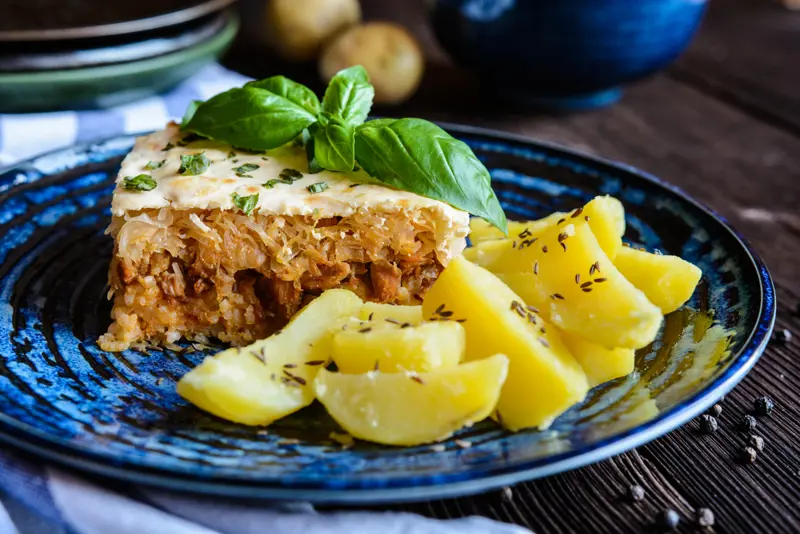
A Cluj dish with cabbage. Copyright © Sisterscom.com / Shutterstock
Transylvanian gastronomy
The regional cuisine is based on pork meat. In addition to many different types of sausage, smoked bacon is also very popular, and eaten with “horinca”, a very strong liqueur. Instead, well-flavoured soups and nettle puree are eaten in spring.
A well-known dish is “Cabbage à la Cluj”, made of cabbage and minced meat. Alongside a great wine tradition, which has transformed Transylvanians into respected wine makers, is the production of fruit distillates with refined flavours and aroma.
Text by Federica Fusco
Updated by Alisè Vitri
Avion Tourism Magazine
Photos: Copyright © Sisterscom, Shutterstock / Depositphotos
Copyright © Sisterscom.com
Tourism Board
www.visitcluj.ro
www.romania.travel
Partnership with Booking.com
Where to sleep in Cluj
Cluj is a welcoming city and offers different possibilities for accommodation.
To find the ideal hotel and the best offers you can do a search for the stars but also for districts or landmarks.
LANDMARKS
Hotels in tourist areas
AIRPORT
Hotels near the airport
where to go in cluj
Monuments in Cluj
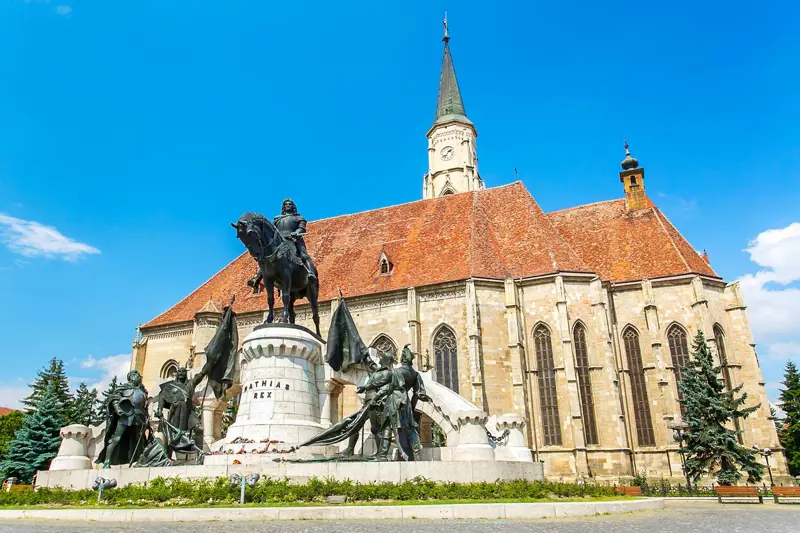
St.Michael's Church. Foto uso editoriale: Copyright © Sisterscom.com / mazzzur / Depositphotos
ST. MICHAEL'S CHURCH IN CLUJ
Erected between 1350 and 1487 on the site of the former St. Jacob’s Chapel, this church is one of the most beautiful Gothic buildings in Transylvania. The altar, built around 1390, is the oldest part of the church. The most recent section is the tower, built in neo-Gothic style in 1860.
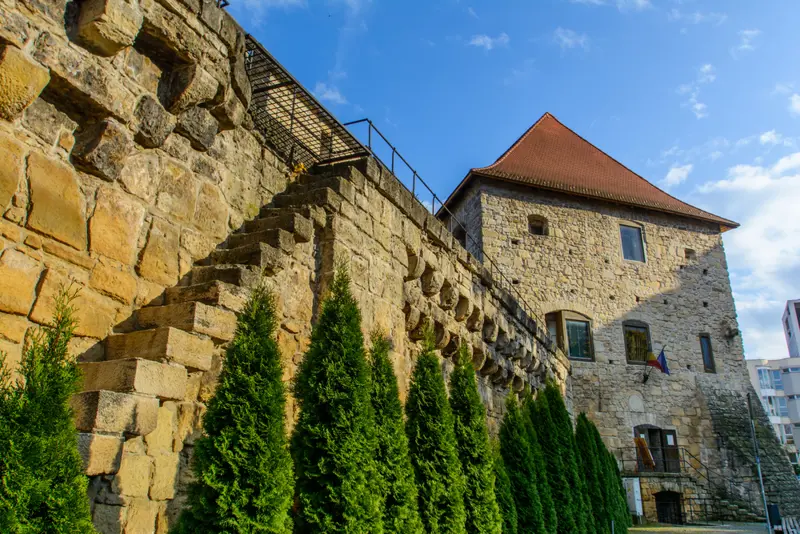 Cluj. Copyright © Sisterscom.com / Shutterstock
Cluj. Copyright © Sisterscom.com / Shutterstock FORTRESS HILL IN CLUJ
This is certainly one of the best places for a panoramic view of the city and surrounding countryside. The name refers to an Austrian fortress built here in the nineteenth century to ensure control, rather than defence, over the city. It has also been used as an occasional prison.
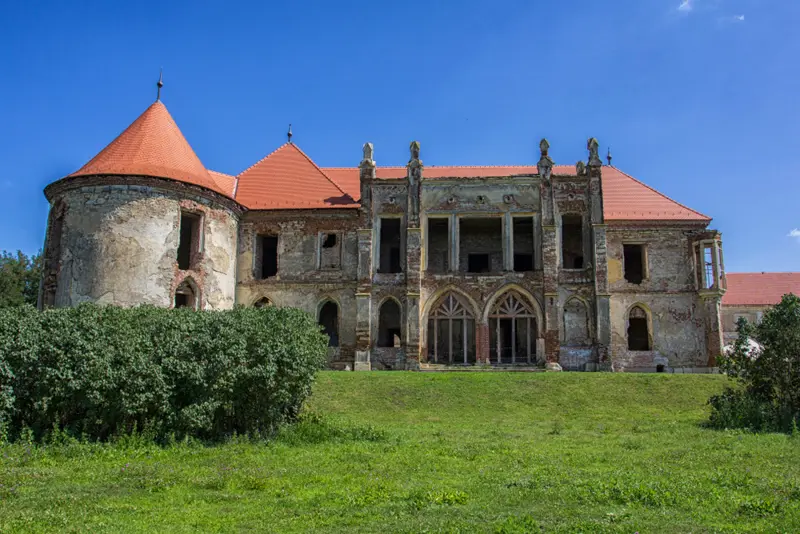
Cluj. Copyright © Sisterscom.com / Shutterstock
BANFFY PALACE
The former residence of the Austro-Hungarian governors, the palace was designed by the german architect Johann Eberhard Blaumann. Built between 1774 and 1775, it is considered the most representative example of Baroque style in Transylvania. In 1951 it became head office of the Cluj National Art Museum.
UNION SQUARE IN CLUJ
Distinguished by its Baroque, Gothic, Renaissance and neo-Classical buildings, the square features St. Michael’s Church and the Banffy Palace. In the southwest corner of the square stands Hotel Continental, built in 1895 in an eclectic style combining Renaissance, classical and Baroque elements.
Museums in Cluj
CLUJ NATIONAL MUSEUM OF ART
The museum is found inside the Banffy Palace. The 22 rooms feature sculptures, weapons, furniture, rugs and paintings by famous Romanian artists such as Nicolae Grigorescu (1838-1907), Theodor Aman (1831-1891) and Theodor Pallady (1871-1956).
ETNOGRAPHIC MUSEUM OF TRANSYLVANIA
Founded in 1922, this museum offers an excellent introduction to the traditions and folk art of Transylvania and with a collection of more than 65,000 ethnographic items and is one of the most important ethnography museums in Romania.
HISTORY MUSEUM OF TRANSILVANIA
Founded in 1859, this museum illustrates the history of Transylvania from the Palaeolithic era to the present day. It houses many valuable and rare items from different historic periods ranging from the Bronze Age to modern times.
Excursions in Cluj
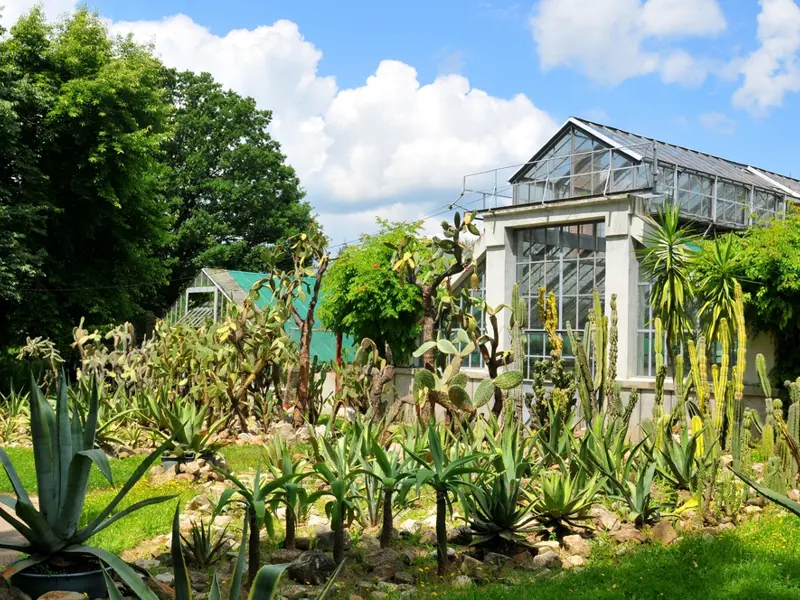
Cluj. Copyright © Sisterscom.com / Shutterstock
ALEXANDRU BORZA BOTANIC GARDEN
This is one of most important botanical gardens in South East Europe. It is home to more than 1000 species of plants, including tropical species (including the enormous Amazonian water lilies) and a Japanese garden.
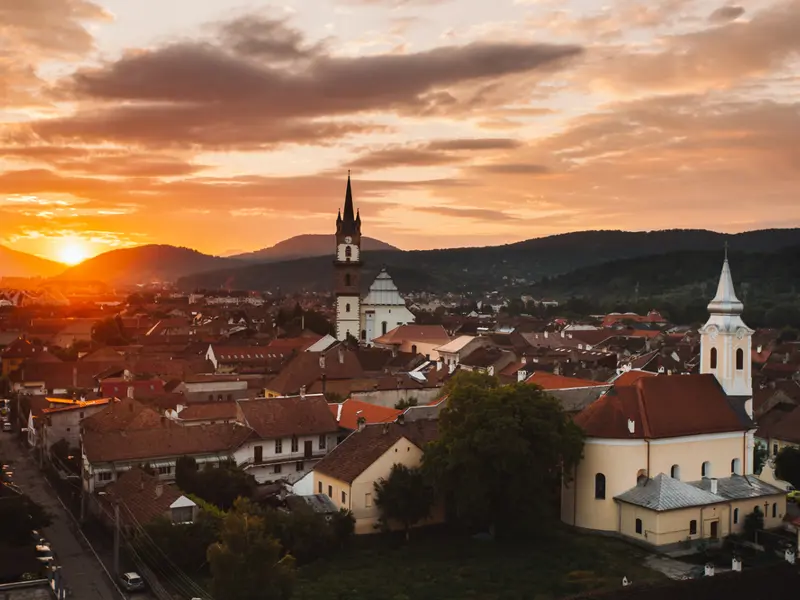
Cluj. Copyright © Sisterscom.com / Shutterstock
BISTRITA
Located at the foot of the Bargau Mountains, not far from the Borgo Pass (Pasul Tihuta) which connects Transylvania region to the Bucovina, the town of Bistrita is one of the oldest. Archeological findings indicate that the area has been inhabited since the Neolithic age. Today, merchants’ houses, the remains of the 13th century fortress walls have preserved some of Bistrita’s medieval atmosphere.
Partnership with GetYourGuide
Tours and excursions
Luxury
You might be interested in
Other destinations
Airports nearby Cluj

